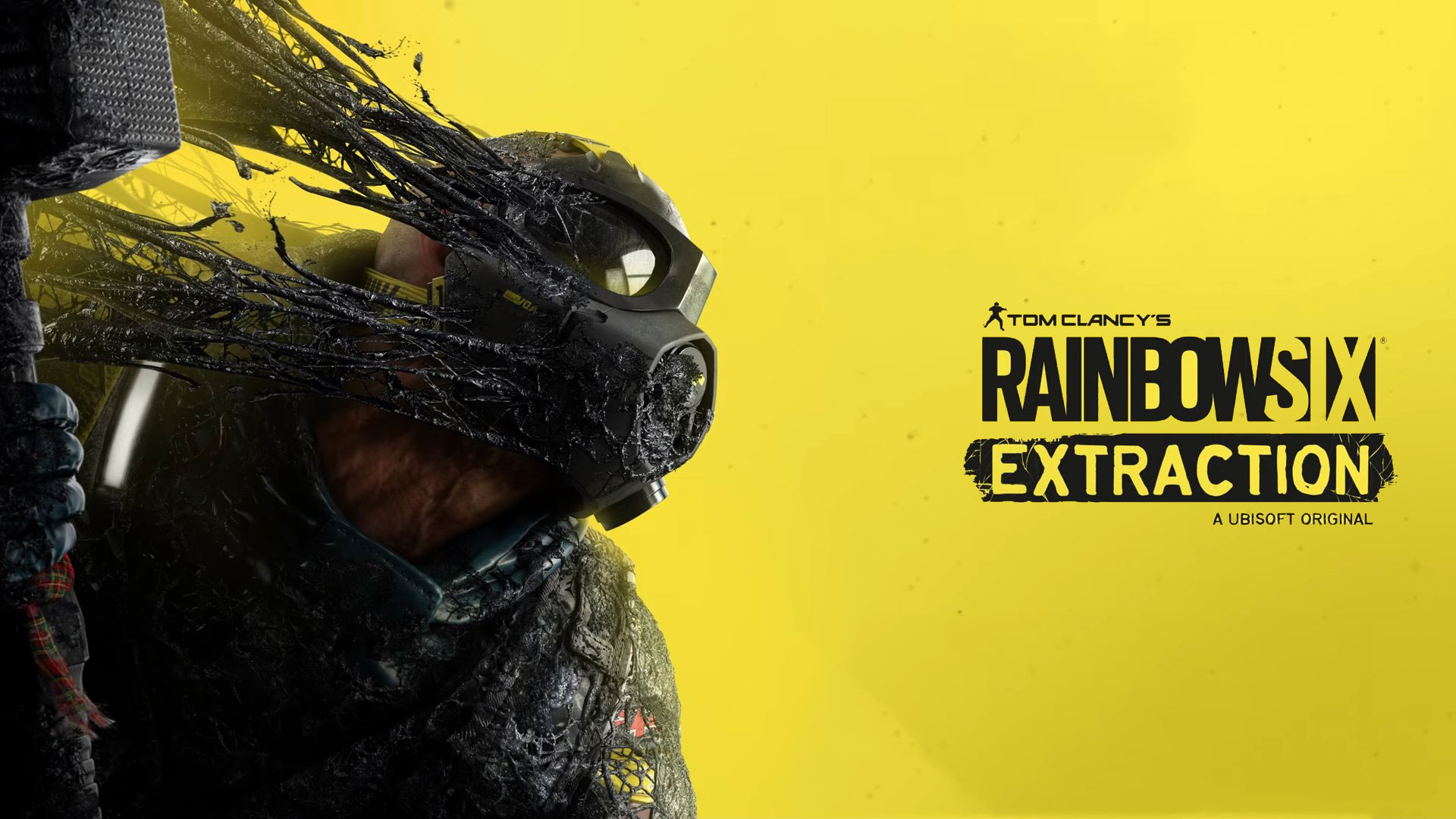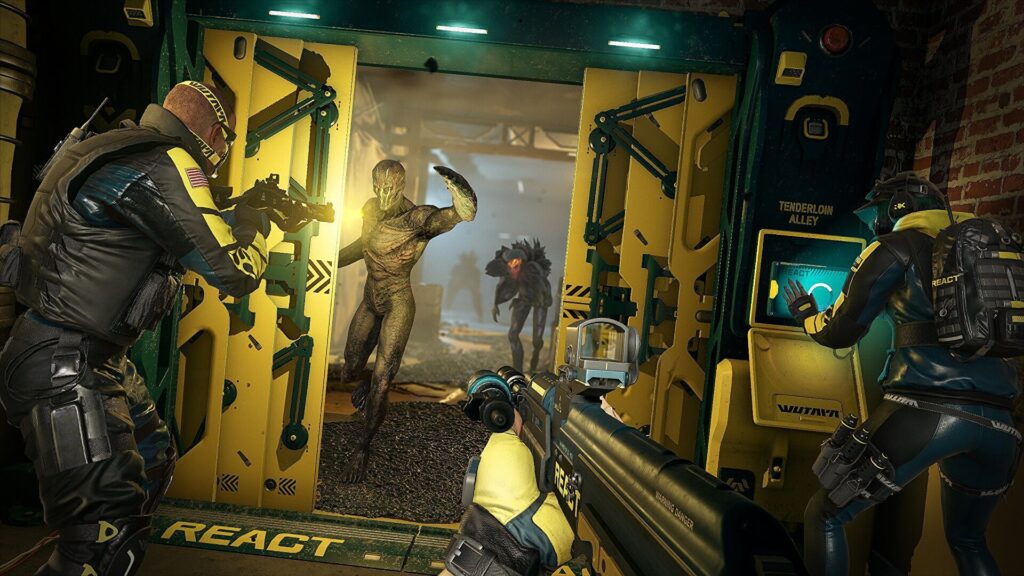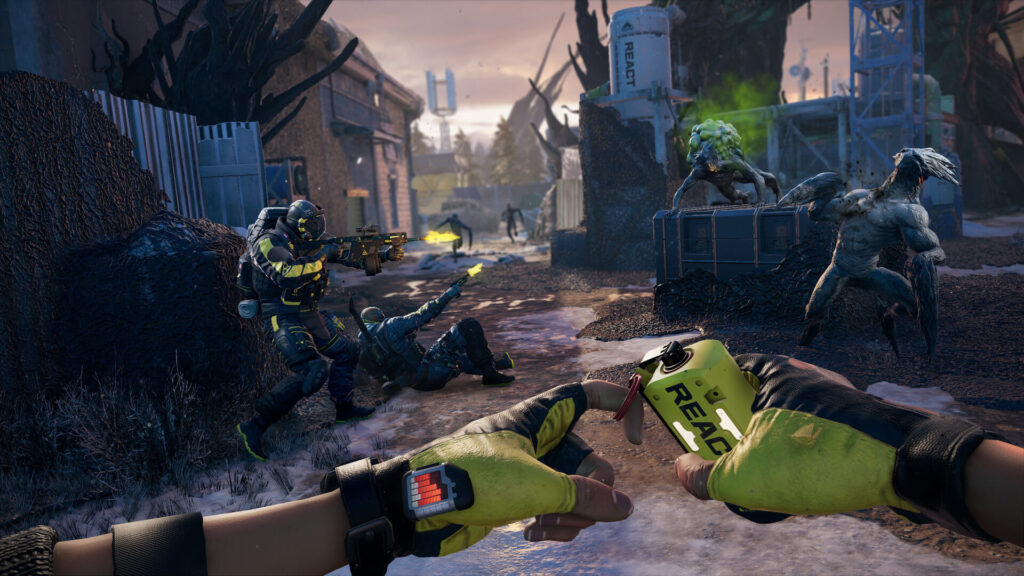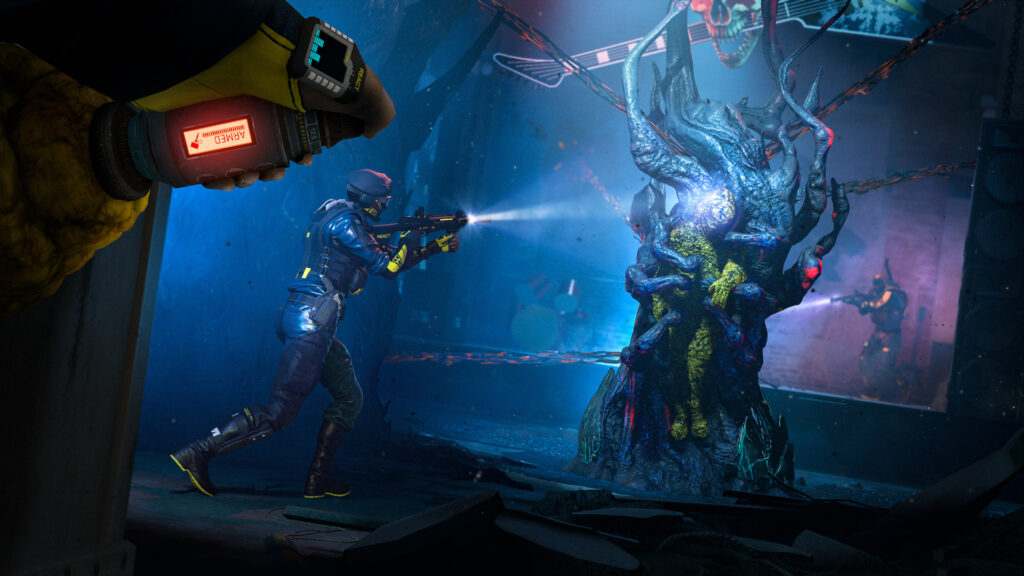Title – Rainbow Six: Extraction
Platforms – PS5, PS4, Xbox Series X/S, Xbox One and PC
Release Date – January 20th, 2023
Developer – Ubisoft Montreal
Publisher – Ubisoft
MSRP – $39.99
ESRB – M for Mature
Disclaimer – This product is being reviewed on the PlayStation 5. A review copy was provided by Ubisoft for the purpose of this review. This review may also contain spoilers for certain gameplay and story elements. Watch at your own risk, you have been warned. Gaming Instincts is an Amazon Affiliate and does gain financial benefits if you choose to purchase this product on this page.
Walking into Rainbow Six: Extraction, I wasn’t quite sure what to expect. On the one hand, I thought Ubisoft might be gearing up to release another generic co-op shooter into the already crowded space. On the other hand, I was worried translating elements of the ever-popular tactical shooter, Rainbow Six: Seige, into a co-op experience that essentially throws waves of enemies at your operatives would prove an impossible task to accomplish. Let’s be fair here, after spending nearly twenty hours with the game, I can say it does, at times, feel at odds with itself, trying to come to terms with both sides of its nature. There are two distinct personalities at play in the tactical elements it borrows from Seige, which constantly clashes with the shooting gallery elements it wears front and center.
The bizarre thing is, while these elements do clash from time to time, they never deterred me from playing. Sure, there were frustrating moments to deal with, but it manages to get far more right than I could have imagined. Each incursion into the alien-infested locations carries a diverse and unique enough experience that makes you look forward to the next one, and each operative offers a varied experience, whether dropping into the world solo or with a group of friends. The game wins you over with just how much strategy is to be learned, hopefully improving your next run with your newfound knowledge. Rainbow Six: Extraction, in its leadup, looked like the kind of game I have played many times before, and I am pleasantly surprised to state my expectations have been subverted.
It Came From Outer Space
Rainbow Six: Extraction was inspired by a Rainbow Six: Seige event, which should help explain why the two are so closely tied together.
During the Outbreak event, operatives worked together to investigate a virus that had crashed-landed on earth in a meteorite. While the alien virus has taken on a slightly different form in this game, the concept remains relatively the same. This time around, the virus has not been contained but instead has taken hold across much of the world, although players can only choose from four locations in the main game. If you know the traditional Seige experience, you might not expect Extraction to have a strong story, and in the traditional sense, you would be right.
As a whole, the narrative serves as a backdrop to the places you will visit, providing a reason to travel to each. The game’s main organization, REACT, has done the front-end work for each area you will travel to, and you will, then, carry out missions to help defeat the Alien threat. Cutscenes are what you might expect (extremely high quality) and showcase a character explaining why they are in one of the four locations. After they have done so in these brief narrative stints, much of the overarching story fade to the wayside so you can focus on what they know you want, shooting, stabbing, and more shooting.
You get much of the lore through a component called Studies, which I found far more compelling than I thought it would, despite them being very easy to finish. Each location has a set of studies that range from pinging certain enemies, to killing a set number of them on any specific incursion. They each offer a narrative point describing all the unknowns about your enemy, challenging you to solve the problem during your run. Upon completing a study, the player can unlock more information concerning that study, which adds an interesting bit of information to your understanding of the Archæans. If a deeper understanding of a minor element doesn’t compel you to complete them, there is a more practical reason you might want to as well. Studies offer experience toward milestones in the game, and those are what several operatives, levels, and modes are all locked behind.
Like all co-op-based live service games, there is a limitation to the narrative that should be acknowledged. For starters, the player will very quickly expand much of the narrative early on, as they are some of the quickest elements to unlock. More importantly, as with many games in this space, the repetition of fighting aliens can be fun for a long time, but you won’t feel like you’re winning in the end, as your fighting never amounts to much. Also, you can expect to get the same game missions several times, such as capturing samples from certain enemies, which of course, you have already retrieved like a hundred of, making one more seem pointless. It comes with the territory when it comes to games like Rainbow Six: Extraction and should be relatively unintrusive to the average player’s experience, but bears noting all the same
Another Day, Another Incursion
In the grand scheme of things, Rainbow Six: Extraction is one of the best-looking games from Ubisoft upon release. Starting with the character models, they all have a decent layer of polish, though, in this game, they may have been able to cheat. Extraction and Siege share a universe, so it makes sense that the games use the same characters, with Ela and Hinaba being my go-to pair because they are the two of three characters with displayed faces at the start. I’m not sure how big this is for Rainbow Six players, per se, but most of the characters in the game wear face masks which feels at odds, at least in my experience, with the character-based shooters I have played. Maybe nobody cares, since playing that character means you can’t see them anyway, but it did make many of the characters look relatively similar, which was an issue I had with Seige as well.
From a first-person perspective, guns look great in your hands but also feel great to fire. Almost every weapon comes with a suppressor in their first build, but this can change as you level up your operatives. Since stealth can play an active part in any incursion, it makes sense to give you this as a base part of your kit, which acts as an unofficial advantage since going in loud can bring the full wrath of the Archæans upon you. I mentioned in my introduction that each character has a different kit, but also different weapons that can be unlocked through leveling up. The difference between them and how to mix and match your equipment for the best effect, both for the levels you are going into and the difficulty, can make a world of difference.
Level design is also a bright spot in the game and honestly helped diversify it from others in the same genre. Again, as I stated, the tactical elements of Siege are present in Extraction. Arriving in an incursion area, you are encouraged to begin slow and methodical, and the level designs work to encourage that. Every level has walls that can be shot through to eliminate enemies on the opposite side, or blown up and breached if you would like to do that. Tight hallways with enemies keep you from just rushing to your next objective as you slowly move, clearing both enemies and nests that can spawn more as you move from point A to point B. Then you have bigger rooms where it is hard to gauge just what threats might be there, or where the enemy spawning nests might be. Several areas in this game also offer verticality in the form of staircases and balconies where enemies might come out of nowhere.
My favorite part of the levels was the mix of both indoor and outdoor settings. An area in San Francisco, for instance, offered a large outdoor alleyway and parking lot space, with some vertical areas on rooftops. There was also a bar with a stage, so you could get into a firefight there just as easily as you would in that alley, and both of these areas have their own challenges. Again, in a New York level, there was a penthouse apartment offering both a large indoor patio, as well as tight and claustrophobic indoor areas as you travel through the rooms hoping not to get trapped by charging enemies.
Extraction Successful
While the game has a lot going for it, even before getting to this point, tight gameplay is essential and expected. Thankfully, the game does this well, even when it feels at odds with the game that ultimately inspired this. Extraction has multiple operators, each with its gear and level scheme. While operators become more useful during incursions as they level up, the best upgrades are the additional guns and gear you receive. Most operators I played felt squishy in combat, even at their higher levels. Even later in the game, when I began to toy around with the higher difficulties, I found that I was as apt to get killed on the hardest difficulty as I was on the easiest. On harder difficulties, you will face the full range of Archæans, but the randomness of each run may lead you to get swarmed on an easier difficulty or have no enemies on a harder difficulty.
The reason for this, and the overall strength of the game, is the fact that Rainbow Six: Extraction employs a rogue-like style to every run. Some enemies are more apt to appear on higher difficulties that state they feature the full range of enemies, but there is always a possibility one will appear even on a lower difficulty. There is also the possibility that only one or two enemies will appear on a given run, or simply that one type like the exploding bloaters will be the dominant enemy. This element will also change how you will complete an incursion as enemies rarely spawn in the same place twice, and nests also appear randomly on the map. The objectives also operate in this way, with players being forced to explore each level to find them, meaning not only are the locations of the objectives changing, but the enemies around them are as well, forcing players to treat them differently each time.
This Rogue-like element plays to great effect, offering a different experience across each run, keeping the game fresh. Though, like most games that employ this, it can act as a double-edged sword. In easy mode, a run can start simple with players sneaking in, only for a room or hallway to become a killing field once a large nest of enemies makes an appearance. On the converse side of this, other runs can feature relatively little resistance as you complete the easiest objectives with ease and then simply escape through to the next area. The game does place more risk and reward on this though, as even after completing an objective, you can wander the field and kill enemies to get more experience before making your exit. This gameplay loop proved far more compelling than I initially thought it would, but it’s not without its flaws.
Although the objectives themselves can change, the game makes it clear what to expect in all three areas when the player enters an incursion. It is important to complete these challenges because they give experience points to advance your character and REACH milestones to unlock the game’s content. Missions include rescuing a person in the area or sabotaging an Archæan pillar by setting a bomb and trying to protect it for a minute or so. Missions like the latter give players the full extent of Seige content such as barricading weak walls and windows. That mission, plus another requiring players to hold three areas in an area as waves of Archæans attack, proved to be the most annoying to me and truthfully at odds with the more tactical and systematic style of play. Worse yet, these missions often tended to be the first mission on any given incursion, which felt odd given how challenging they proved compared to other missions you undertake.
On the other hand, the game takes a less forceful approach to progress. Every area has an extraction point that can be easily found by a floating marker that appears when you’re in range of it. This places a risk vs. reward mentality on the player, asking them if they want to risk continuing or bail out of a situation, grabbing whatever experience they gained up to that point. Another difference is the safe rooms that, unlike Left 4 Dead, are not necessarily safe. Usually, these rooms offer players a breather from the action and allow them to prep for what is to come. These rooms usually offer a health pack, some ammo, and restocks on REACT gear like barricades, as well as a restock on your special. That’s to be expected, but what isn’t expected is that they are often filled with enemies, making waltzing in unwise. Further still, the door you enter is still connected to the previous area. You can close the door, which acts as a solid defense, but enemies can chase you in or wander in if you keep that door open.
Operators also act differently than you might expect if you are a fan of games like Left 4 Dead or Back 4 Blood. Characters have two health bars represented by a white bar and blue bar, with characters starting at 100 white health and 50 of the blue health. If you lose blue health, it is not much of a big deal, it is the white health bar you need to be concerned with. As you lose white health, you cannot regain it during your run. While you can regain health as you play, it will be part of your blue health, which is supplementary to your red health. When a character loses a significant amount of health after extracting from the incursion zone, they are placed in injured status, unable to be played until another character earns enough experience to heal them. All of this is dependent on the player escaping, which can be a tall order. If they can’t, that character goes MIA and becomes an objective on your next run into that area. Multiple characters can go MIA as well, meaning that you need to be careful when it comes to your best operatives.
Shockingly enough, while Extraction was advertised as a multiplayer game, the solo experience is incredibly fun as well. Of course, the experience is intended to be enjoyed by you and two of your friends… Or even strangers. This offers a much harder experience as the game is scaled for the number of players in your party. For instance, missions in which you need to take down a harder target will scale so that two, or even three targets appear in the area for you and your squad to take down. Similarly, the mission in which players need to destroy a pillar by defending a bomb will have more enemies to defend against. Each player’s stock of characters acts independently of each other, meaning if you and your teammates get downed, only you’re character will ultimately go MIA. Upon returning to that area, an MIA mission will occur in which each player is attempting to save their respective operative. Similarly, where your operative gets injured, that character is only injured for you and not anybody else.
This puts an extreme amount of emphasis on teamwork when working with other players as being on the same page will lead to success. Even with people I know, which I played the multiplayer with, we often ended up in our corners of the world as everything went to hell around us. This means that, while you can play the game with strangers through matchmaking, that might not be the recommended way to play, especially if you have no plans to talk to them. Picking characters that compliment each other is also a key to success. Each character has a special ability that can help, and some will combo together nicely. Others have abilities that can help in any team setting, such as Doc’s ability to heal, which, trust me, you want.
Unfortunately, the biggest issue I found when playing the game in co-op was a lack of gear. Ammunition containers with multiple players multiply to fit the team, with the amount of ammo a player can carry seeming to be unlimited. Outside of ammunition, all other pickups such as health seem to be scarce. Most of the time, arriving at the safe house, I bought one health pack for multiple people nearing death. Since health does not restore naturally, you would think that there would be more pick ups, especially given that after two downs, your character is captured by the Archæans, leaving you out of the rest of the mission, not even brought back as your team crosses through a safe house.
Final Verdict
Rainbow Six: Extraction manages to deliver a welcoming experience in the cooperative shooter category, differentiating itself from the other games on the market through its tight gunplay, challenges, and enemy encounters. There is plenty to learn as you play, and master, from the design of the levels to which characters and weapons work best for you, or which ones compliment your team. The game offer a risk and reward system that encourages the player to choose if they want to keep going for higher exp or escape with their lives. It also adds a layer of depth to the experience I was not expecting. Make no mistake, this package is not without its flaws creeping in from time to time, but even at their most noticeable, they didn’t make me want to postpone my next incursion and walk away. The result is a great start to a new Rainbow Six game, building on the foundation that the previous title took years to build. Knowing how long Rainbow Six: Seige has been supported, one can only hope that Ubisoft has a similar plan here as I am excited to see how Rainbow Six: Extraction can grow.
Stay tuned at Gaming Instincts via Twitter, YouTube, Instagram, and Facebook for more gaming news.







